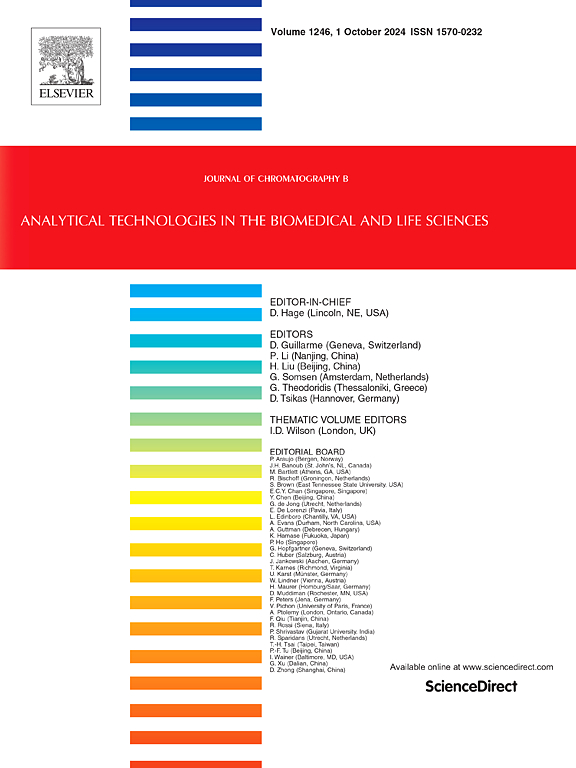Rapid and sensitive HPLC with fluorescence detection method for quantifying selpercatinib in liver microsomes and rat plasma: Implications for drug-drug interaction studies
IF 2.8
3区 医学
Q2 BIOCHEMICAL RESEARCH METHODS
引用次数: 0
Abstract
Selpercatinib (RETEVMO®) is a selective anticancer agent recently approved for thyroid and non-small cell lung cancer. Reliable analytical methods are essential for investigating its potential drug interactions. In this study, the fluorescence properties of selpercatinib were exploited for the first time to develop a sensitive high-performance liquid chromatography with fluorescence detection (HPLC-FLD) method to quantify selpercatinib in human and rat liver microsomes and rat plasma. The method was successfully validated according to M10 guidelines demonstrating excellent accuracy, precision, selectivity, and sensitivity across a concentration range of (50–2000) ng/mL in plasma samples, with a short run time of less than 4 min. The method was applied to metabolic stability studies, where selpercatinib exhibited moderate intrinsic clearance (CLint) in human liver microsomes (CLint of 44.9 μL/min/mg), low clearance in female rat liver microsomes (CLint 10.6 μL/min/mg), and nearly no depletion in male rat liver microsomes. After treatment with dexamethasone, the clearance of selpercatinib was enhanced in both female and male rat liver microsomes, suggesting potential drug-drug interaction. Dexamethasone-treated female rat liver microsomes showed clearance similar to human liver microsomes, indicating their suitability as a surrogate model for studying human metabolism in vitro. Additionally, the inhibitory effect of myricetin on selpercatinib metabolism was comparable in both human and dexamethasone-treated female rat liver microsomes, with IC50 values of 9.3 μM and 10.9 μM, respectively. These findings suggest the need to investigate these potential drug interactions in clinical settings, as they may affect selpercatinib efficacy and toxicity. This HPLC-FLD method offers a rapid, sensitive, and cost-effective alternative to LC-MS/MS for studying pharmacokinetics in various in vitro and in vivo models.
求助全文
约1分钟内获得全文
求助全文
来源期刊

Journal of Chromatography B
医学-分析化学
CiteScore
5.60
自引率
3.30%
发文量
306
审稿时长
44 days
期刊介绍:
The Journal of Chromatography B publishes papers on developments in separation science relevant to biology and biomedical research including both fundamental advances and applications. Analytical techniques which may be considered include the various facets of chromatography, electrophoresis and related methods, affinity and immunoaffinity-based methodologies, hyphenated and other multi-dimensional techniques, and microanalytical approaches. The journal also considers articles reporting developments in sample preparation, detection techniques including mass spectrometry, and data handling and analysis.
Developments related to preparative separations for the isolation and purification of components of biological systems may be published, including chromatographic and electrophoretic methods, affinity separations, field flow fractionation and other preparative approaches.
Applications to the analysis of biological systems and samples will be considered when the analytical science contains a significant element of novelty, e.g. a new approach to the separation of a compound, novel combination of analytical techniques, or significantly improved analytical performance.
 求助内容:
求助内容: 应助结果提醒方式:
应助结果提醒方式:


